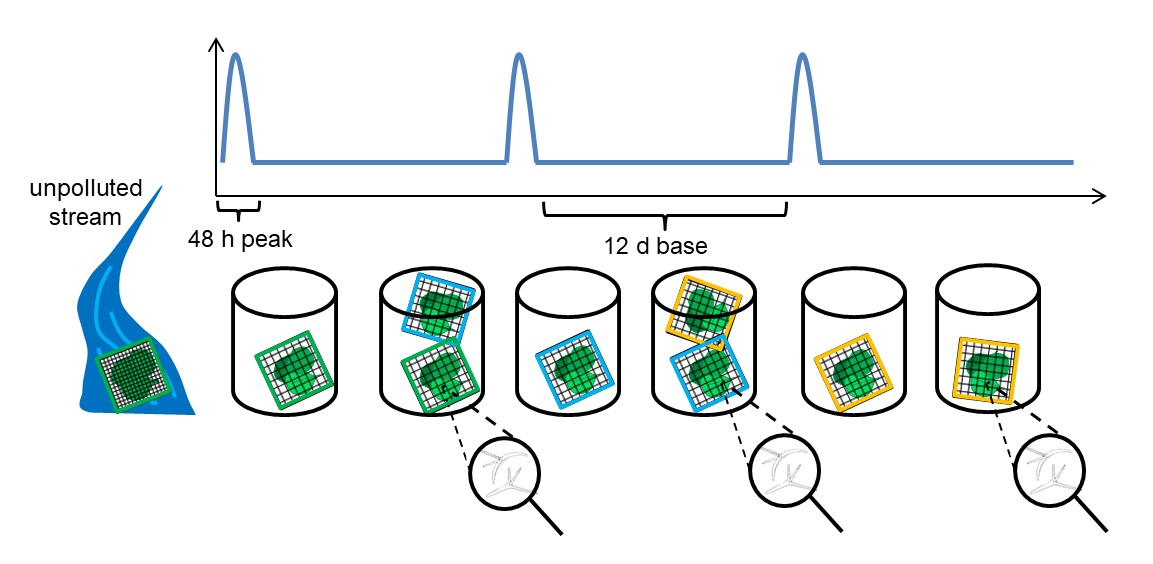In this post, Verena Schreiner talks about a recently published paper entitled “Similar recovery time of microbial functions from fungicide stress across biogeographical regions”.
Analysing stress responses is one of the key aspects in ecotoxicology. Usually, the response of one locally available organism or community is quantified and afterwards transferred to related organisms and communities of different origins. The question remains whether this assumption is correct?
To address this question, we investigated community stress responses over the biogeographical regions of the Central Plains (Denmark), the Western Highlands (Germany), and the Fenno-Scandian Shield (Sweden) with additional data from the South Eastern Highlands (Australia). We used hyphomycete communities – aquatic fungi which play a key role in the leaf decomposition within streams – from local unpolluted streams of each biogeographical region as model communities due to their fast generation cycles and the cosmopolitan occurrence of some taxa.

Schematic illustration of the experimental design: The first leaf set (green) was colonised in unpolluted streams for 1 week and subsequently used in the experiment. Leaf sets 2 and 3 (blue and orange, respectively) were colonised in the microcosms by the microbial community from previous leaf sets for 1 week. The fungicide exposure pattern (three 48-hour peaks, each followed by 12-day baseline exposures) is depicted in the upper part (graphic by V. Schreiner)
The hyphomycete communities were periodically exposed to peaks of agricultural fungicides in environmental concentrations, which are known to affect non-target fungi in streams, whereas three cycles of consecutive resource colonisations were analysed (see figure). During each of the colonisation cycles, the functional stress response in terms of decomposed leaf mass and the structural stress response as changes of hyphomycete community assemblages were quantified. As expected, the decomposed leaf mass was reduced under fungicide stress during the first colonisation cycle in all regions. During the following colonisation cycles, however, we detected recoveries of the decomposed leaf mass back to control levels across all biogeographical regions. The community composition and its stress response, however, showed varying responses. These results suggest that the communities changed while simultaneously maintaining the function of leaf decomposition. With this, we were able to show, that while the stress responses at the functional level were very similar, the responses at the structural level varied across the different biogeographical regions.
The paper was authored by Verena C. Schreiner, Alexander Feckler, Diego Fernández, Katharina Frisch, Katherine Muñoz, Eduard Szöcs, Jochen P. Zubrod, Mirco Bundschuh, Jes J. Rasmussen, Ben J. Kefford, Josepha Axelsen, Nina Cedergreen, and Ralf B. Schäfer, and is published in Scientific Reports.
